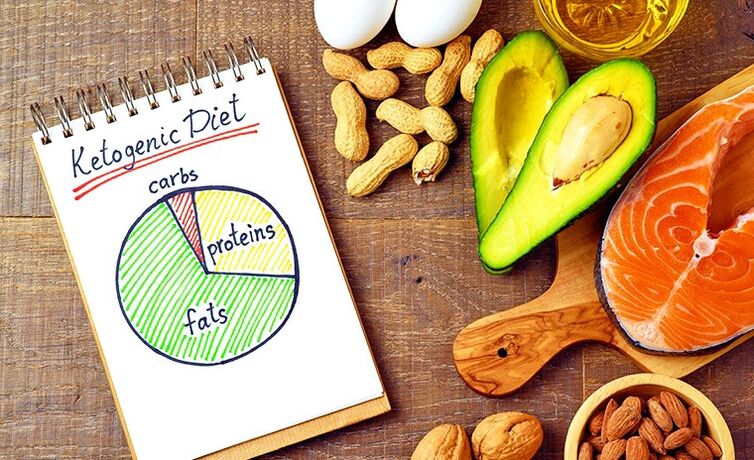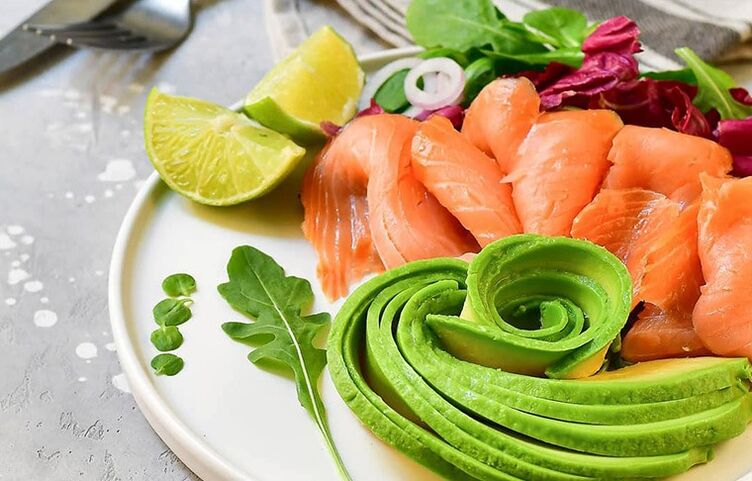
If twenty or thirty years ago someone put all the products in two baskets and sorted them according to the principle of greatest and least usefulness, today you should take a comprehensive look at them. The strangest story happened during this period - the main enemy of mankind in recent times is not only fully restored, but almost declared his savior. Is that so, nutritionist Chris More understands.
Recently, a patient admitted to me that she and her husband ate one kilogram of pork a week - three slices for breakfast, then two more salads for lunch. I have been working as a nutritionist for more than twenty years and it seems that nothing will surprise me, but then I still could not resist and asked: why? The patient said that her husband was watching a TV show about the keto diet and decided to try it. Six months in the pig - and now the husband lost nine kilograms, and according to his wife almost exploded with energy that strangled him.
More and more people are hearing about the miracles of the keto diet. They claim that it burns fat in the body, boosts energy and conquers diseases, and then it is not only possible but necessary to eat as much pork as you want. But all their passions need at least a serious test - is a keto diet that doesn’t limit animal fat intake really that good?
Ketogenic Diet is a low-carbohydrate diet with low fat and moderate protein. Initially, it was used to treat epilepsy in children by increasing the level of ketone bodies in the blood.
What is ketosis?
Let's start with the name of the diet: where did this "keto" come from? When the body does not have enough carbohydrates - for example, due to diabetes or prolonged hunger - it has to break down its fat more actively than ever to get energy. Ketosis develops: metabolism is disrupted and more ketone bodies accumulate in the tissues. Ketone bodies are the product of fat metabolism. Insulin is produced by the liver when it is reduced in the blood.
"The liver always makes ketone bodies, but their levels depend on the carbohydrates and proteins you eat - the body needs both, " explains Jeff Volek, a professor at Ohio University.
The breakdown of fat in a healthy person's body and the formation of ketone bodies is a normal process called ketogenesis. Unlike ketosis, ketogenesis does not cause dramatic weight loss. Ketosis is a pathology that can be caused by a keto diet, in addition to diabetes and long-term starvation, because it almost eliminates carbohydrate foods from the diet. A person with advanced ketosis loses weight dramatically due to some other pathologies.
A ketogenic diet forces the body to use fat as its main source of energy. In general, this role is played by carbohydrates, which, when taken with food, are processed to glucose, which is extremely important for the nutrition and functioning of the brain. However, if the diet is low in carbohydrates, the liver converts fats into fatty acids and ketone bodies. Ketone bodies enter the brain and are used as an energy source instead of glucose. An increase in the level of ketone bodies in the blood (ketosis) leads to a decrease in the frequency of epileptic seizures.
The main part of the daily diet in the keto diet - 60-80% - fats, proteins - about 15% and only the remaining 10% carbohydrates (this is half of a small loaf). At first glance, it is similar to the Atkins diet, but the Keto diet has a more severe carbohydrate restriction, according to Spencer Nadolsky, author of The Fat Loss Prescription. Some theorists claim that when we eat a small amount of carbohydrates, our body burns so much fat that our metabolism improves, our immunity increases, and various miracles take place in our body in general.
However, in normal life, we get about half of the calories and we don't get one of them from carbohydrates. So, in essence, the question is: can your body be in ketosis to achieve the promised nirvana without serious health consequences? Will you literally start craving for fat?
Is the keto diet right for you?
It may sound strange, but the best diet for you is the diet you are used to. It's good for Volek, who has been in keto for twenty years, but is it right for you? Unfortunately, there is no research on what happens to the body of a person who has been on a keto diet for a long time. During the A to Z Weight Loss Study, scientists examined the Atkins diet, Zone, LEARN, and some other diets, but in the study, women consumed 25-35% of carbohydrates - not close to 10%. Limit yourself to a keto diet.
The only thing that is definitely known: you will really lose weight on a keto diet. In Italy, in 2015, they studied the performance of people sitting there and lost an average of 10-12 kilograms in three months. A year ago in Spain it turned out that you can lose about 20 pounds a year in this way. It is true that over the next year, the subjects often regained their weight before the experiment as soon as they left the strict diet.
What will you eat if you decide to try? First and second, he is a pig. Most of the other products will not suit you. Starchy vegetables - potatoes, squash, corn - are strictly forbidden, as are most fruits. Milk, beans, rice and pasta will also be forgotten.
The keto diet is difficult to follow and can be dangerous for some. Dr. "Excessive diets, especially the keto diet, are strictly contraindicated in people with neurodegenerative diseases such as epilepsy, " says Alan Aragon.
Ketogenic diet is considered optimal in society for weight loss. However, according to scientific evidence, the effect of weight loss after switching to a ketogenic diet is a decrease in the amount of water in the body and only the energy balance affects the amount of body fat. The energy provided by food for weight loss should be less than the energy expended on physical activity. Like other low-carbohydrate diets, one of the benefits of a ketogenic diet is that ketosis, which occurs with low-carbohydrate diets, helps you lose weight in obesity. The difference in calories eaten can be a thousand kilocalories per day compared to low-fat diets. The effect of ketogenic diets is highly dependent on the protein content of the diet.
Can I take drugs that increase ketone bodies? By no means. Even if you have no diet, do not listen to "counselors" who will convince you that you can cause ketosis with the help of special drugs.
So is the keto diet right for you or not? If you are an extreme athlete who is ready to experiment with your body, if you like to take risks and fast results are important to you, give it a try! If you only want to lose a few pounds and have experienced the "yo-yo effect" before (when a person has lost weight after a strict diet and gained more weight than they were able to lose), you probably don't risk it. However, if you approach your keto diet wisely, there are three lessons you can learn from it that will definitely be useful.
- Reduce your intake of "empty" carbohydrates. Analyze what foods you get the most from your daily carbohydrate intake: if it's from fiber-rich fruits and antioxidants, that's fine, but if your carbohydrate sources are any food made with candy, soda, and white flour, you know what to do: Don't hesitate to send them to the trash.
- Avoid oil. The passion for low-fat foods that began in the 90s can be safely left in the past. There is nothing good about it. Manufacturers often increase the amount of sugar in such products to compensate for the lack of fat. Eat oily fish such as salmon, mackerel or sardines at least twice a week. Whatever you cook, don't skimp on vegetables, especially good - olive oil.
- Eat plenty of herbs. All leafy vegetables and greens go well with fatty and protein foods - fans of the keto diet eat a lot. You do the same thing. Eat cabbage, spinach, shit tea, arugula and other salads without restrictions.
What happened to my pig patients? Her nutritional experiences lasted until the birth of her child. Of course, they immediately forgot about the diet (there is no time to think, as explained by the young mother). Remember: sooner or later you will decorate yourself with regular pork stuffing and return to your normal, familiar diet.
Definitions

Salmon and asparagus salad
Ingredients:
- 150 g of salmon fillets;
- 80 g of green asparagus;
- 1/2 head iceberg lettuce;
- 2 eggs;
- 4 anchovy fillets;
- 5 cherry tomatoes;
- 5 large capers (or 6-8 small ones) - take salted dishes in salted water, they should be washed before use;
- 1/2 medium sized red onion;
- 6-8 Art. l. olive oil;
- 1 teaspoon dijon mustard;
- juice of half a lemon.
How to cook:
- If you cooked nikoise first, you can also manage this salad. Nicely repeats Nice's main dish, only oily salmon is used instead of tuna, and asparagus is used instead of green beans (you can also use beans).
- Salmon is best cooked in a hot frying pan or in a hot oven, not in a steamer or slow cooker: at a temperature of 80-85 degrees for 20-30 minutes, not higher (otherwise the protein will bend and the fish will come out hard). But you can also fry in a pan (just don't overdo it! ) - the fish should be soft and retain some transparency inside.
- Cook the asparagus. It should be crispy, so don't overcook! The cooking time depends on its size, so we do not recommend leaving the oven - asparagus cooks quickly.
- Place the peeled iceberg on a plate (salad should be washed, dried and cut into medium-sized pieces), asparagus, salmon in large chunks, half of cherry tomatoes, anchovies, hanging, chopped onion and boiled boiled egg (ideally the yolk should remain soft, not liquid). On top of the fields with Dijon mustard and olive oil sauce with lemon juice. You don't need to salt the food - anchovies and capers are already quite salty.
Ketogenic diet includes ultramarathon, triathlon, cycling, etc. Used by athletes participating in sports that require endurance such as. long-term tension.
Pork and lettuce salad
Ingredients:
- 2 salad heads along the palm
- 100 q pork;
- 8 peppermint mint;
- 1 egg yolk;
- 6 tbsp. l. olive oil and a little more to fry;
- 1 teaspoon mustard;
- 1 tbsp. l. sherry vinegar.
How to cook:
- For this salad you will need to prepare a slightly more complex sauce: put mint leaves and mustard in a tall glass, add egg yolk, pour sherry vinegar. Beat in a blender while adding the olive oil to a thin stream.
- Divide the salad in half lengthwise and fry over high heat quickly. The inside should be fresh and crispy permanently caramelized, ie it should get a golden brown color. Roast the pork on high heat without fat or in the oven until crispy. Put lettuce, pork and sauce on a plate. Garnish with mint leaves.














































































